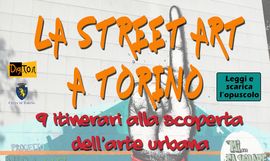Home » DISCOVERING TURIN » A journey into the Middle Ages: Sant’Antonio di Ranverso
18 Luglio 2019
A journey into the Middle Ages: Sant’Antonio di Ranverso
For a trip a stone’s throw from Turin in pursuit of art and history, we recommend this little-known destination, which tells a long history of pilgrimage
Carlotta Bianchini (translation by Lorenzo Bijno)

The church of Sant’Antonio di Ranverso
If you drive along the Torino-Susa state road between Rivoli and Avigliana and look to your left, you can see a very thick tree-lined avenue. Surrounded and half hidden among the green of its leaves stands the Precettoria di Sant’Antonio di Ranverso, a complex of three buildings – Abbey, Monastery and Hospital – which are among the most important and symbolic medieval monuments of Piedmont. Over the centuries, the Precettoria has undergone protection firstly by the Savoys and then in 1775 by the Order of Malta through the Mauritian Order, to which it still belongs today.
The church is still used for religious services and is also a museum open to the public from Wednesday to Sunday.
HELPING PILGRIMS
The abbey was founded in the twelfth century as place of worship and rural life and was completed in the thirteenth by the monks of Sant’Antonio di Vienne, an order dedicated to the care of travelers and the faithful.
In medieval times, there were three important pilgrimage destinations: Rome, the Holy Land and Santiago de Compostela. At that time, due of its geographical centrality, Italy used to be crossed by thousands of pilgrims, therefore representing a crossroads of different peoples, languages and cultures from every corner of Europe, especially from nearby France. The abbey was the starting point of a series of roads and routes known as the via Francigena, which led from Rome to Jerusalem and is now recognized as a Cultural Route of the Council of Europe, embodying a journey that goes beyond the nations.
ON THE VIA FRANCIGENA
The complex of Sant’Antonio di Ranverso was built to offer hospitality and care to travellers, who were often struck by serious illnesses such as plagues or shingles, and then donated to the Antoniani order by Count Umberto III of Savoy, who wanted to build it right near the road travelled by pilgrims.
Even today, it is fascinating to admire what remains of the Ospedaletto and the signs, albeit recent, indicating which way you should go if you wish to go to Rome or to Santiago. And in that cut-out among the trees, it is easy to go back in time and relive the stories of the pilgrims.
THE ART OF RANVERSO
We can imagine the history of the Precettoria by looking at the many frescoes that decorate the interiors of the complex, which are mainly to be ascribed to two artists: Giacomo Jaquerio, a fifteenth-century painter who worked at the court of the Savoys, and Defendente Ferrari, who lived a century later.
The biblical scenes depicted in the frescoes reveal a lot about the place and the history of those who lived there, including their suffering and the epidemics they had to endure; the episodes from the Christian history are depicted in a realistic and vivid way and include animals and scenes from that tiring and monotonous life typical of the dark ages.

A frescoe by Giacomo Jaquerio
In collaboration with Study in Torino





